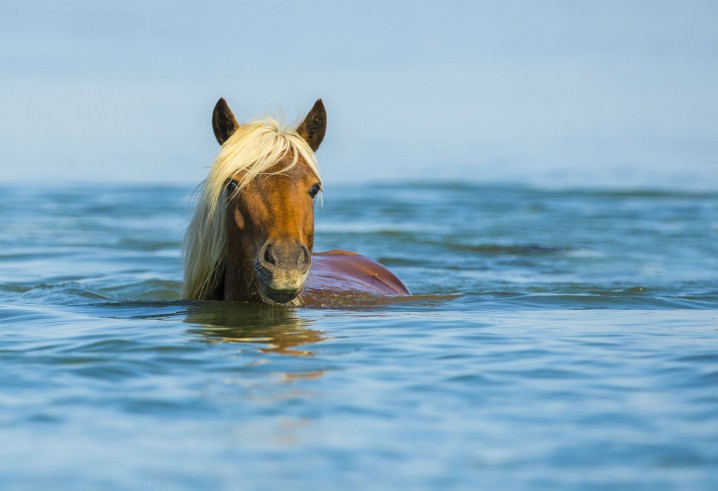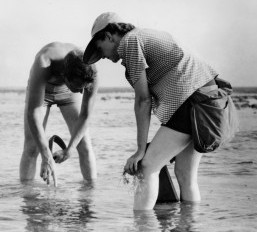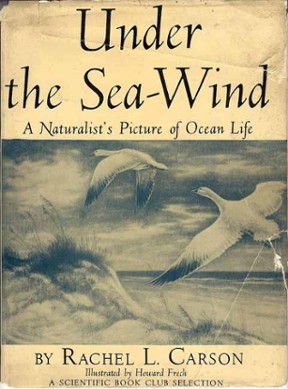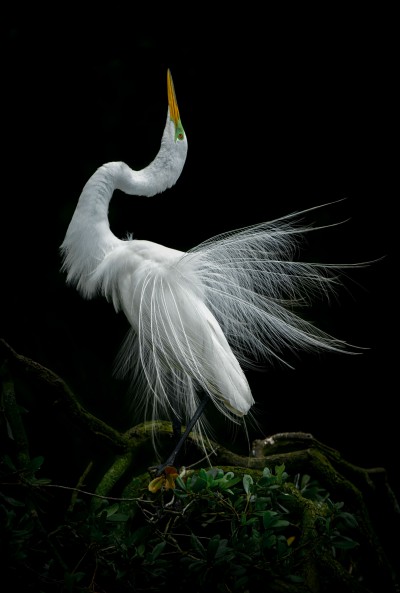
First of two parts
BEAUFORT — The ability to weave together poetry and science is today something of a lost art. Yet there was a time when the two were nearly inextricable from each other. In the 1700s for instance, both scientific theory and treatises were written in poetic form, and poets such as Johann Wolfgang von Goethe, author of Faust, were often as deeply involved in the cutting edge science of their day as the likes of Newton.
Supporter Spotlight
In our modern worldview, though, the two pursuits sit worlds apart; one seeking to capture the wonder of nature in words, inspiring the imagination to run wild like Lost Boys in Neverland; the other seeking to take a scalpel to it all, cutting it open, spilling its guts, and ordering its secrets. Maybe the poet John Keats best served justice to this point when he declared that Newton had destroyed the poetry of rainbows by reducing them to mere prisms of light, revealing that even at the height of the Enlightenment, poetry and science were suspiciously seen as strange bedfellows by some.
By the 20th century, this union between poetry and science was in its death throes. Modernization was compartmentalizing all aspects of life. Art and science were collateral damage. Yet there was one discipline if you will, that clung to this union with everything it had. This keystone that held together the bridge between two seemingly opposite intellectual realms was nature writing.

None of this was lost to a young Rachel Carson as she swung her feet over the side of the small wooden skiff and into the shallows at the foot of Bird Shoal off Beaufort for the first time. The year was 1938. Hitler was busy goose stepping Europe toward another World War, and on the home front the United States had just established the first minimum wage. As for Carson, her recent success with a Readers Digest article titled “Undersea,” and the encouragement of editors at Simon & Schuster, had led her to the sleepy fishing village of Beaufort to collect experiences and begin work on her first book, Under the Sea Wind.
Today, Rachel Carson is best known by most people for her fourth and most-famous book Silent Spring, which many credit as the spark that ignited the modern-day environmental movement. But long before Silent Spring was a twinkle in her mind’s eye, Carson had published a series of books about the sea that stand beside the likes of Thoreau’s Walden and Burroughs’ Signs and Seasons, taking their place as some of the most important American nature writing.
The genius of Carson’s writing was the ability to weave together enchanting literary prose with cutting edge marine biology of the day. This was new. This was both style and content unseen and unread by the American public. And her role as a biologist for the U.S. Bureau of Fisheries, renamed U.S. Fish and Wildlife Service in the 1940s, gave her access to the intricate scientific knowledge she needed for creating such books. By the time Silent Spring was published, Carson was a known entity, a literary giant in her own right, and one whose books were read on both sides of the Atlantic.
Supporter Spotlight

Walking in Her Footsteps
In the gin clear shallows, I find myself wading through both water and the world so vividly painted in Under the Sea Wind. My skiff is being held by a sand anchor on the eastern edge of the reserve that now bears her name in front of Beaufort.
With flooding tide, I am able to cast off any worry about becoming stranded here. And thanks to the full moon overhead, I am afforded the astronomical spring tide and therefore the opportunity to penetrate deeper than usual into the labyrinth of shoals and oysters, and maybe even the murky waters of history, that bisect this little complex of islands. Cautiously I plant my feet trying not to step onto the backs of hidden stingrays or into historical quagmires whose holes pock mark these shallows like so many dimples on a golf ball as I walk in the footsteps of Rachel Carson.
Looking south and to the east, I stare out across a vast expanse of water to a black and white thimble on the horizon. A light flashes every 15 seconds from a first order Fresnel lens, signaling to passing ships both the location of Cape Lookout and the nine miles of shoals that thrust out to sea where countless sailors have met their maker.

It is there, somewhere beneath the breakers that roll over those shoals that the wreck of the El Salvador rests, a Spanish treasure galleon that once sailed as part of Spain’s Flota de Indias. When she came to rest on the ocean floor during a hurricane in August of 1750, she did so with 16 chests of silver and four chests of gold valued at $124 million today, and is acknowledged to be the largest unfound treasure in the North Atlantic.
Following the ribbon of sand that runs west from Cape Lookout Bight to Beaufort Inlet, I trace the contour of Shackleford Banks. This island plays home to wild horses whose origins may very well date back to one of the first English expeditions to Roanoke Island when sir Richard Grenville’s flagship, the Tiger, ran aground in this vicinity in 1585, forcing his men to offload the livestock they had recently traded for in Puerto Rico and Hispaniola.
Across the inlet sits Fort Macon and roughly the site of where a pirate by the name of Blackbeard once had his flagship, the Queen Anne’s Revenge, run aground, stranding some 300 of his compatriots as a form of corporate downsizing before he and a small handful of men quickly set sail with the syndicates’ collective wealth.
And to the north and west is the town of Beaufort itself, founded in 1713 and home to the Old Burying Grounds, where the mass graves for those who died in the Tuscarora Indian War and the sailors who perished from the shipwreck of the Chrissie Wright sit next to that of famed privateer Captain Otway Burns. He who once plundered some 2 million dollars’ worth of goods from British ships in a single voyage, and whose grave is now surmounted by a canon taken from his privateer, the Snapdragon.
This is a landscape that literally drips with history – 400 years’ worth to be exact. And these are the borders to the world Rachel Carson would depict in Under the Sea Wind, as well as sections of later books, The Sea Around Us and Edge of the Sea. Here, time moves slowly. Glacially so. And change rolls in and out with the ebb and flow of the tides.
Horses and the Reserve

So much has changed here since Carson waded these shallows waxing poetically about black skimmers, shad fisherman and sanderlings. The wild horses that now roam these little islands were absent when she first came here. It would be nearly a decade before Luther Fulcher of Beaufort would transport six horses from Core Banks across the sound to these little islands and release them to graze; though a map produced for the U.S. Coast Survey by Alexander Bache in 1857 clearly labels Horse Island, which remains on maps today as part of the reserve, giving any student of history reason to pause and consider the possibility that horses have probably long been an off-and-on fixture of these islands.
And why not? During hurricane Isabel in 2003, three of the horses on the reserve were washed off the islands and out to sea where it would appear Poseidon, both god of the sea and horses, took pity and landed them ashore on Shackleford Banks some two miles distant. One of those horses was a young colt named Sugarfoot for his white socks. He can be found today playing out his role as a lead stallion with accompanying harem of mares on the reserve – a living testament that horses can and do both survive storms and mysteriously wash up on the shores of barrier islands.
The old fisherman’s shack described by Carson is long gone. The shack, which reserve Manager Paula Gillikin’s father remembers as being little more than a “glorified duck blind,” belonged to Coot Willis and was at Guthrie Shoal on the east side of the island. And although fisherman still work their trade around the island, pound netters no longer battle it out with gill netters for territory when the shad run up the river, and the great wheel that stands upon the shores of Taylors Creek no longer reels in nets strained by the weight of menhaden – maybe the most important fish in the Atlantic. But at night, the occasional skiff can still be seen with a torch, albeit battery operated, hanging over the water in search for flounder to gig.
Other things never changed, despite what many a blog and local folktale would have you believe. One such instance of this is the naming of Carrot Island. As the story goes, the island was once named “Cart” Island for all of the fisherman’s carts left there. Over the years, outsiders misunderstood the Ocracoke or Down East brogue that so distinguishes the local dialect and mistook the name Cart for Carrot, forever bastardizing the name of this island. Yet a cursory look over the historical maps of the area tell a different tale – namely the Mosely Map of 1733, which labels the island “Carrot” and was drawn up just two decades after the town of Beaufort was founded. Even John Shackleford Jr., for whom Shackleford Banks is named, distinctly refers to the land in question as “Carrot Island.” The distinctive brogue and the nature of southern dialect tends to phonetically smooth out and round off words. Therefore over the years a name such as Carrot would actually come to be pronounced as Cart – similar to how “brown” became “brain” and “tide” become “toide.” And let’s not even get into words like “mehonky.”
But more important than such changes documented through the local annals of history, are the ones that were occurring in the natural world when Carson first came to Beaufort. With over two hundred years’ worth of a world view that suggested America’s so called “natural resources” were inexhaustible, and practices that took from the land hand over fist, unregulated, unrestricted, for greed of the wallet, or the greed of the stomach, it is quite possible that we would not even recognize the living landscape that Carson described.
When Rachel Carson put pen to paper in the small cottage she rented on Atlantic Beach, she was doing so at a time of great change. The currents of history were shifting course both for the good and for the bad. And the very same species that she depicted the daily dramas of in Under the Sea Wind stand testament to this fact today.








